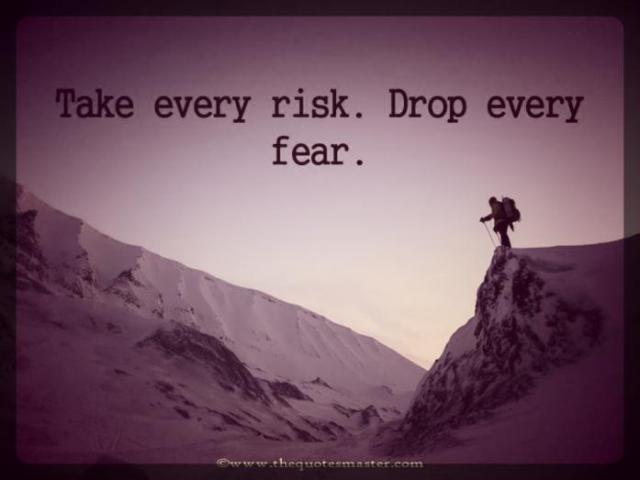The inspiration for this post came from my son’s (shocker) recent actions. We have to create an environment that let’s individuals capitalize on their natural inclination to take risks. Typically, this inherent drive is born from confidence and an inner desire to achieve. Unfortunately, hesitation tends to play a role for all ages based on the fear of failure. A fear that grows exponentially for many of us as we age. But with increasing frequency, individuals often fall victim to a lack of risk taking due to an overabundance of guidance.

I was sitting in mass the other day with my mother (she wanted to see my son serve mass) when the processional started playing. I had a shock to see my son leading the way with the cross in hand. It was a role he had never had before with a different set of responsibilities. I have to explain three things for this to make more sense.
- My first emotion was pride.
- My son has not had the opportunity to serve a lot of masses. His lack of repetition has made him a little shaky concerning specific duties in the role he normally serves, much less something totally new. There is only so much you can learn from watching.
- My first emotion upon reflecting on the second point immediately turned to uneasiness and quite possibly some fear.
The pride I felt grew as I watched him progress through the mass. When it was all over and he finished cleaning up the altar, he came out with the biggest smile on his face. I told him he did a great job and asked why he was assigned that role. He told me that he volunteered to take it because he wanted to show my mother how good he was doing. I told him how proud of him I was for taking that chance and asked how he liked it. He responded: “Dad, it was an hour of sheer terror, but I did it.”

Notice the wording of all those points until the end. They all begin with “I” and “my.” They deal with how I felt. This is one of the contributing factors to students not being given the opportunity to thrive in an environment where they take risks and fail; repeatedly. It is the presence of fear on the part of the person not partaking in the risk. Change is often halted by those who are least affected by the outcome. This pertains to students, parents, and teachers alike.
- How often as parents do we tell our children not to do something because we are afraid they will fail?
- How often do we as teachers tell our students not to do something different because it is not the traditional way it has been done?
- How often do we as leaders tell our teachers not to do something because we are afraid of how it will affect people’s short term opinions, perspectives, and possibly standardized assessment results?
We all need to address the issue of changing our perspective if we are going to build and support a healthy environment for facing difficulties and taking risks. After all, the only way a person can become the best version of themselves possible is to get uncomfortable and risk failure; sometimes in a big way. Try these three things next time you find your child, student, or teacher looking to take a risk.
Let go of your need to protect
Obviously this does not pertain to safety issues, but instead all others. Overprotecting individuals hinders their natural urge to be self confident and take risks in an effort to get closer to their definition of success. People have to find themselves before excelling as themselves. This only happens by taking chances on their abilities.
Praise the effort, not the outcome
Talk to the individual after the event. Praise them for having the courage and willingness to take the risk regardless of the outcome. This keeps the immediate conversation away from success or failure and helps build a resilience to fearing failure every time there is no sure answer. You will have plenty of time to reflect and debrief later.
Reflect on the why
Take time with the person and reflect on how they came to the decision to take the risk. Get to the thought process and driving force behind their action. The move to how they felt before, during, and after the event. Try to discern if they have anything else they would like to try and then work to appropriately support them in that venture.

All too often, while our intentions are pure, we create environments where our own personal fears are the cause of individuals not taking risks to improve themselves. Whether it is because we have never done something that way, care too much to see the individual embarrassed by failing, or can’t imagine ourselves doing something similar we must remember that progress comes from doing something differently than has been done in the past. We also need to remember that the fear we show transfers to others and will ultimately transform them through reinforcement. Finally, we need to understand that there is no real success without risk and even if it is “sheer terror” during the event; the results are always better than remaining safe and mediocre.
Please let me know your thoughts on risk taking, over-protection, and pushing through failure in the comments below.

